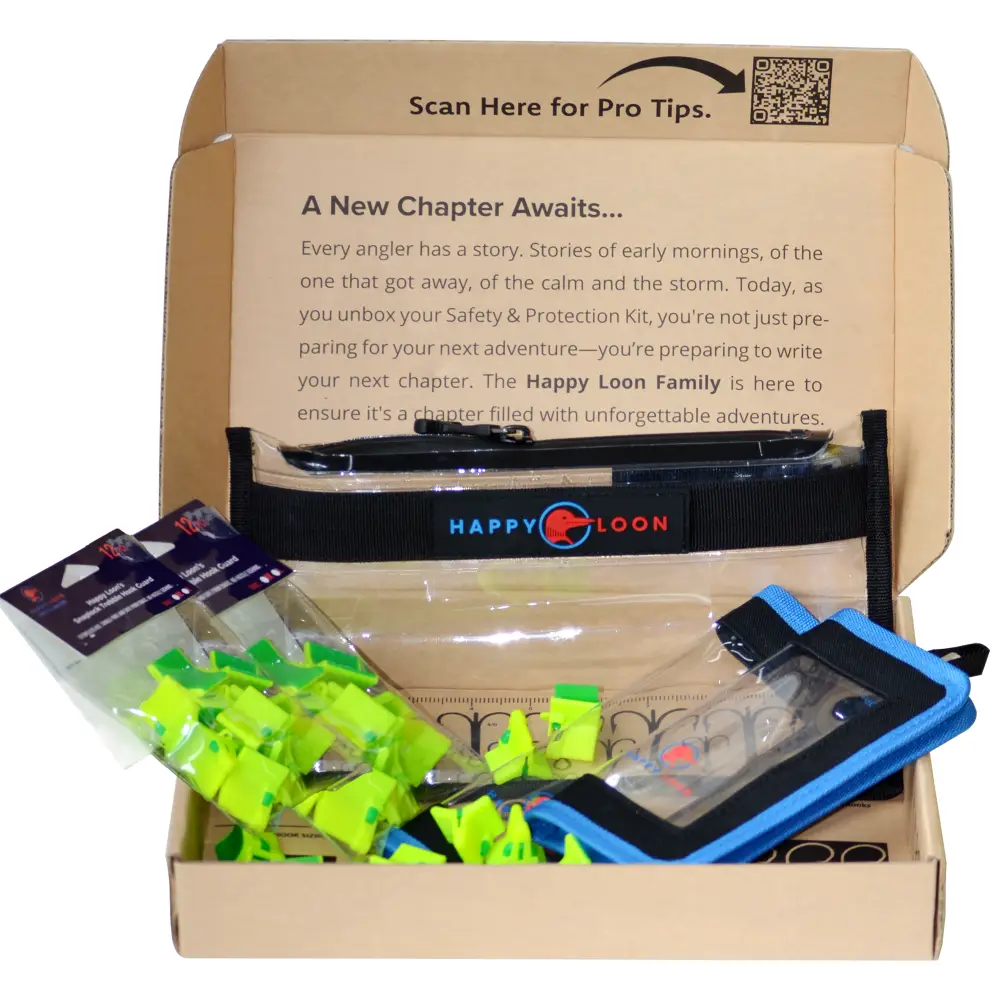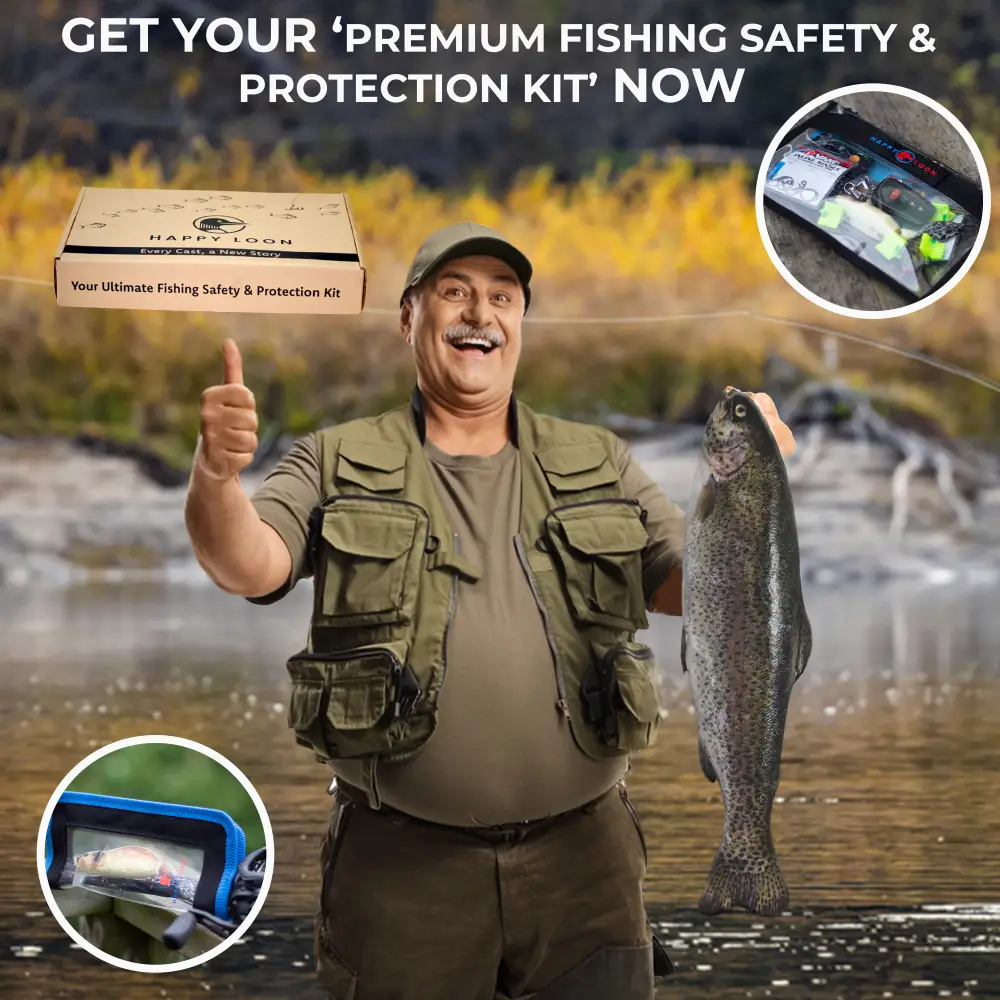Introduction
Fishing is a delightful pastime, but it comes with potential risks. This guide provides essential safety tips for anglers of all levels, focusing on water safety, hook handling, and protecting your valuables.
Stay Safe on the Water: Essential Tips
Life Jackets
- Always wear a life jacket when fishing from a boat.
- Ensure all passengers wear properly fitted life jackets.
- Modern life jackets are lightweight and comfortable.
Know Your Environment
- Inspect waterfronts daily - conditions can change rapidly.
- Respect restricted areas and fishing regulations.
- Adapt safety measures to your specific fishing environment (lake, river, ocean, ice).
Weather Awareness
- Check weather forecasts before heading out.
- Keep an eye on the horizon for approaching storms.
- Be prepared to cut your trip short if conditions worsen.
Hook Safety and Handling
Fishing hooks pose a significant safety risk. Follow these guidelines to prevent injuries:
- Always be aware of hook placement when casting.
- Use caution when baiting and removing hooks.
- Carry needle-nose pliers or a hook removal tool to safety remove the hook from the fish.
- If a hook becomes embedded in skin:
- Don’t attempt removal if it’s near the eyes or deeply embedded.
- Seek medical attention for deep or complicated embeddings.
- Use barbless hooks when possible for easier removal.
We published a detailed article on Fishing hooks safety The Ultimate Guide to Staying Safe from Fishing Hooks – Must-Read!
Protecting Your Valuables
Water and electronics don’t mix. Protect your gear with these tips:
- Use waterproof cases for phones, cameras, and other electronics. Be careful, most marketed as waterproof bags are just water-resistant. Find a real waterproof marine bag.
- Store valuables in sealed, floating containers.
- Consider waterproof, floating bags for larger items.
- Attach floats to keys and other small, essential items.
- Use retainer straps for glasses and other wearables.
- Find bags that can be tethered to your SUB, KAYAK, or boat.
The Happy Loon Ultimate Fishing Safety and Protection Kit

Enhance your fishing safety with the Happy Loon Ultimate Fishing Safety and Protection Kit. This comprehensive set includes:
- Treble Hook Guards: Prevent accidental snags and injuries.
- Premium Waterproof Tackle Bag: Keep your gear dry and protected. Marine, waterproof, and airproof kayak tetherable bag.
- Easy-View Lure Covers: Easy identification and tangle prevention, protects you from the sharp hooks.
- True-to-Size Hook Chart: Select the right hook size every time.
Benefits of the Happy Loon Kit:
- Improved Safety: Reduces risk of hook-related injuries.
- Better Organization: Keep your gear tidy and easily accessible.
- Waterproof Protection: Safeguard your valuable fishing equipment.
- Convenience: All-in-one solution for common fishing safety needs.
Explore the Happy Loon Ultimate Fishing Safety and Protection Kit
Additional Safety Tips
- Never fish alone if possible.
- Bring a first aid kit designed for fishing-related injuries.
- Learn basic first aid and CPR.
- Carry a fully charged cell phone in a waterproof case.
- Stay hydrated and protect yourself from sun exposure.
Frequently Asked Questions About Fishing Safety
Q: What’s the most important safety gear for fishing?
- Life jacket is the most crucial safety item.
- Other essential gear includes:
- First aid kit
- Sun protection (hat, sunscreen, sunglasses)
- Proper footwear
- Communication device (phone or radio)
Q: How can I prevent hook injuries while fishing?
- Use caution when casting and handling hooks.
- Wear protective eyewear.
- Use barbless hooks when possible.
- Carry pliers or a hook removal tool.
- Learn proper hook removal techniques.
Q: What should I do if I get caught in a storm while fishing?
- Head to shore immediately if possible.
- Stay low in the boat to maintain stability.
- Avoid metal objects to reduce lightning risk.
- If on shore, seek shelter away from tall objects and water.
Q: How can I keep my electronics safe while fishing?
- Use waterproof cases or bags.
- Keep devices in sealed, floating containers when not in use.
- Consider waterproof or water-resistant models when purchasing fishing electronics.
Q: Is it safe to fish alone?
- It’s generally safer to fish with a companion.
- If fishing alone:
- Always inform someone of your plans and expected return time.
- Carry a means of communication.
- Be extra cautious and prepared for emergencies.
Q: How do I choose the right life jacket for fishing?
- Look for U.S. Coast Guard approved life jackets.
- Choose a life jacket designed for fishing activities.
- Ensure proper fit - should be snug but comfortable.
- Consider features like pockets for fishing gear.
Q: What’s the best way to handle fish safely?
- Wet your hands before handling fish.
- Support the fish’s body when lifting.
- Be aware of sharp fins or teeth on certain species.
- Use fish grippers or landing nets for larger fish.
Q: How can I prevent slips and falls while fishing?
- Wear non-slip footwear.
- Keep boat decks and fishing areas clean and dry.
- Use caution when moving around, especially in wet conditions.
- Consider using non-slip mats in key areas.
Q: What should be in my fishing first aid kit?
- Bandages and gauze
- Antiseptic wipes
- Tweezers (for splinters or hook removal)
- Pain relievers
- Antihistamines (for allergic reactions)
- Any personal medications
Q: How do I stay safe when ice fishing?
- Check ice thickness before venturing out.
- Wear ice picks and a flotation suit.
- Avoid fishing alone on ice.
- Bring safety gear like rope and ice cleats.
- Know the signs of hypothermia.
Conclusion
Fishing safety is crucial for an enjoyable and worry-free experience. By following these tips and using proper safety gear like the Happy Loon Ultimate Fishing Safety and Protection Kit, you can minimize risks and focus on the joy of fishing.

